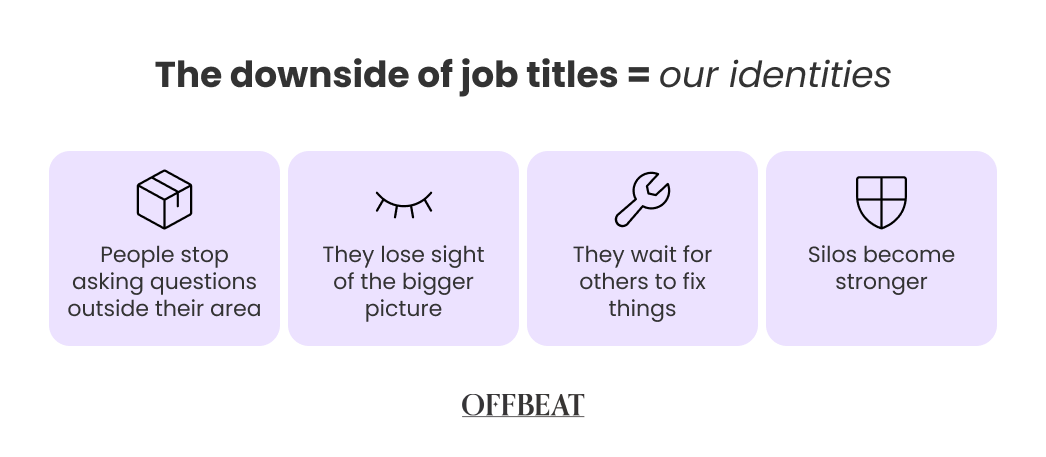Organizations. Where curiosity goes to die
In this post, I explore what really kills curiosity at work, from rigid roles to hidden politics, and why that matters for learning. Plus, a few thoughts on how we can bring it back.
Curiosity is often romanticized in the workplace. It’s celebrated in mission statements, encouraged in job interviews, and even baked into cultural values. But day to day? In many companies, curiosity quietly disappears. Not because people stop caring, but because the conditions no longer support it.
This matters. Curiosity isn’t just a nice-to-have. It’s the starting point of learning. At an individual level, it’s what drives someone to ask questions, explore new ideas, or rethink how they work. At an organizational level, it’s what sparks innovation, surfaces risks early, and helps companies adapt before they’re forced to.
So why does something so vital fade so fast?
Why curiosity dies in organizations
There are many reasons why, and they mostly depend on the context, but in general, here’s what I discovered.
1. We lack transparency
Curiosity doesn’t thrive without context. When information is scattered and decisions happen out of view, people can’t see how things connect, so they stop asking bigger questions.
Curiosity shrinks to match the size of what’s visible.
Transparency isn’t just about openness. It’s about giving people enough context to ask better questions, the kind that lead to learning and smarter decisions. Without it, curiosity becomes guesswork. And most people don’t have the time or energy to chase shadows.
2. We don’t create space to act on what’s learned
Let’s say transparency exists, and exposure isn’t the problem. People hear smart things, see new approaches, and spot better ways of working all the time. But if they never get to try them out, the learning goes nowhere.
Integration, applying what’s been learned, is where the real shift happens. It’s the behavior change, the small experiment, the different way of doing something. But integration is invisible, messy, and slower. So most organizations skip it.
And when trying something new feels unsafe, uninvited, or beside the point? Curiosity fades. Because what’s the point of asking questions if you’re not allowed to act on the answers?
3. We fail to offer a future worth being curious about
Curiosity needs direction. It feeds on the sense that there’s something worth exploring, something better ahead.
In optimistic organizations, the future is present in the room, not just in a slide deck, but in how people talk, what they prioritize, and what they believe is possible. There’s a sense of movement, even in hard times.
Without that? Curiosity feels aimless. Why ask questions if nothing’s going to change, or worse, things will change in a negative direction?
4. We make curiosity feel risky
In highly political environments, asking questions can come at a cost. People learn to read the room, say what’s safe, and avoid anything that might rock the boat, including curiosity.
When image matters more than insight, people stop wondering out loud. They stop challenging assumptions. They stop learning.
Because in a political culture, curiosity isn’t rewarded, it’s managed. And eventually, it disappears.
5. We limit people by their job titles
Job titles help organize work, but they can also box people in. When someone starts to believe their curiosity should stop where their role ends, learning slows down.
People stop asking questions that don’t “belong” to them. They stay in their lane. And the organization loses out on insight, perspective, and systems thinking.
Curiosity needs room to roam, not just up a ladder, but across the whole system.
6. We reward answers, not questions
In many organizations, the people who speak with certainty get the recognition. Those who ask open-ended questions or challenge assumptions are seen as slowing things down.
Over time, curiosity starts to feel risky, like it might make you look unsure, unprepared, or difficult. So people trade questions for quick answers, even when they’re not the right ones.
Curiosity becomes a liability, not a strength. And learning quietly takes a back seat to appearing confident.
7. We rush everything
When speed is the priority, there’s no time to pause and wonder. Reflection gets cut. Exploration feels inefficient. In environments that prize quick wins, curiosity gets dismissed as a luxury.
Can you revive curiosity?
Yes, but not through a one-off workshop or a motivational speech.
Curiosity comes back when people feel it’s safe, useful, and worth it.
That means showing them their questions matter. That it’s okay not to have all the answers. That learning isn’t just tolerated, it’s expected, celebrated, and built into how things get done.
You don’t need a perfect plan. You just need to start making small moves that send a new signal.
Let people into conversations they’re usually excluded from.
Invite questions before you share solutions.
Normalize saying, “I don’t know, but let’s find out.”
Celebrate people who explore beyond their role.
Give space to reflect, not just react.
Curiosity isn’t dead. It’s just waiting for permission to come back.
If you’re finding this newsletter valuable, share it with a friend and consider subscribing if you haven’t already.










Great article, Lavinia!